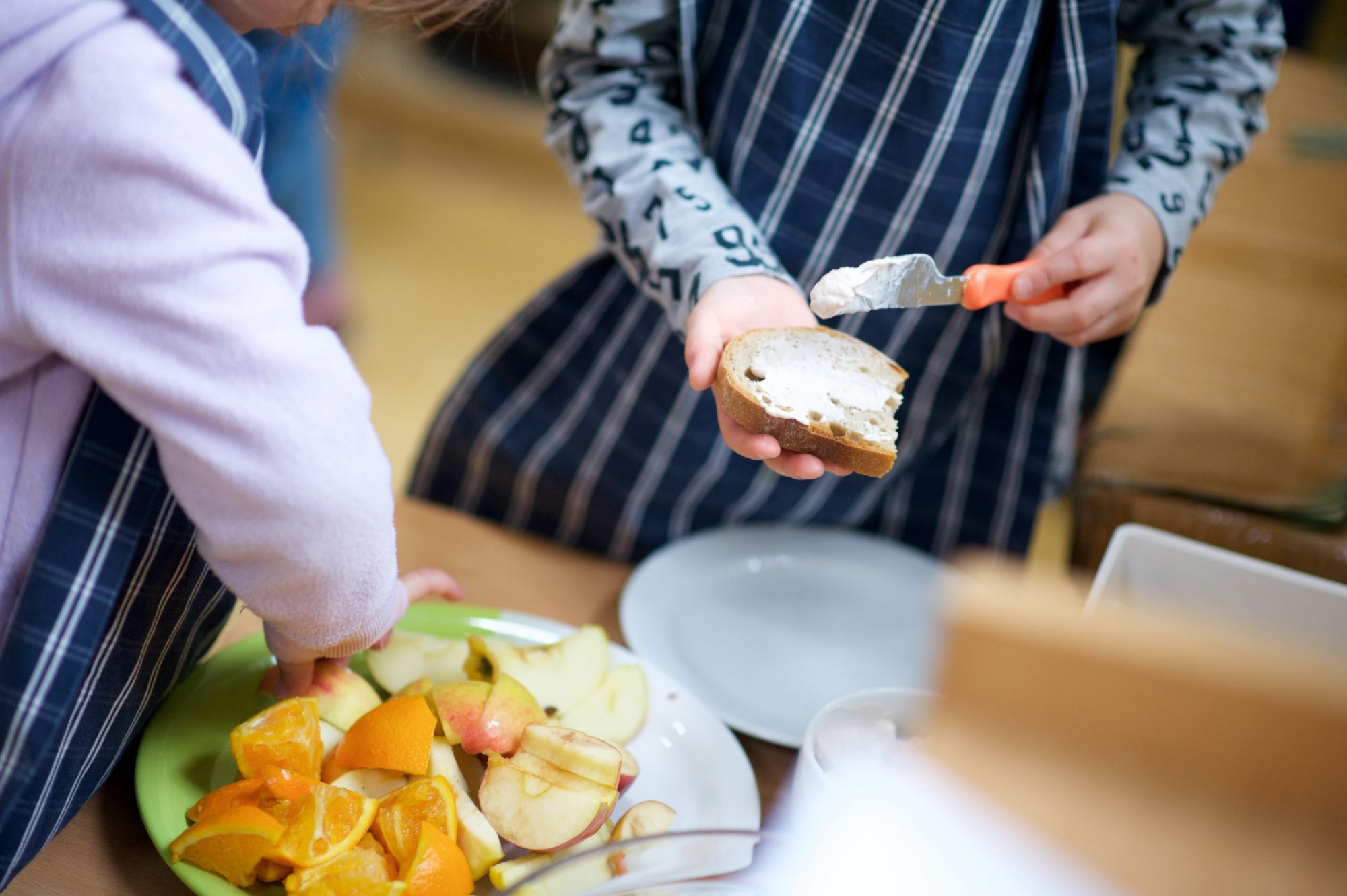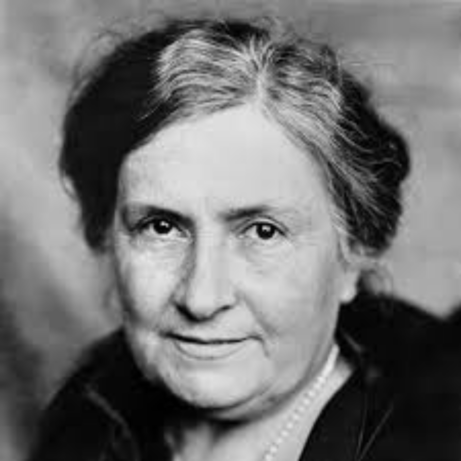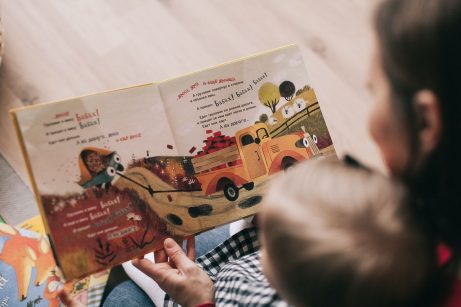Practicing Practical Life

The Practical Life curriculum is the easiest and the most rewarding aspect of Montessori in the home. Its flexibility, emphasis on culturally appropriate tasks and independence makes it perfect for anyone wanting their child to grow up confident and happy.
Practical Life is, in fact, the heart of the Montessori classroom for children up to six years old. It is less emphasized in the Elementary years as the child’s focus moves from practical skills to imagination and abstraction, but its benefits are carried through the rest of each child’s life.
The name seems fairly self-explanatory, but still – what is it exactly?
Activities of Practical Life are tasks or exercises of simple daily chores and actions that people do in order to care for ourselves, others, and our environment. In the Montessori classroom, they are carefully designed to be fully accessible to the child and allow them to carry out the activity without the adult’s help or interference, past the initial introduction.
Concrete examples include preparing food (washing, peeling and slicing fruit; baking pastries or bread; assembling sandwiches and serving food to others); maintaining the classroom (sweeping, mopping, dusting, polishing furniture or washing windows); maintaining the outdoors (planting, weeding and watering flower beds, raking leaves, sweeping paths); doing for oneself (dressing, washing, brushing hair and teeth) and the very special category of interacting with others, which in Montessori we call Grace and Courtesy, and which will have its own future post.
To adults, ever so many of these activities are often considered chores and unpleasant duties. Something we must get over with in order to be able to do work that truly matters, or things we truly enjoy. To a young child however, these are endlessly attractive to the point of being irresistible, and just as endlessly rewarding. So whilst an adult might consider a kindness if someone were to come and take care of these “Practical Life” things for them – we might even pay others to do so – they are a gift and an investment in a child’s future.
“The activities which I have just indicated are called ‘exercises in practical life’, because in the Children’s House real everyday life is carried on in which all housework is entrusted to the little ones, who execute with devotion and accuracy their domestic duties, becoming singularly calm and dignified.”
Maria Montessori, The Discovery of the Child
Benefits of Practical Life
Of course, the most obvious goal of the mirror washing activity is to, well, have clean mirrors; but if that were the only purpose, it would be ever so much easier to hire a custodian. Going a step further we could say that its goal is to have each child learn how to wash a mirror. Then of course you could ask whether that’s really such an important skill for a young child to have. Perhaps not – but in truth this is the least of it. Because when a toddler of eighteen months (and this is indeed the age we introduce it) practices cleaning mirrors, glass doors and low windows, he or she gets so many indirect developmental benefits that they will carry with them for the rest of their life.
First, they practice their motor coordination, both gross and fine. They refine the dexterity of the hand and the purposefulness of movements, more so when learning to use tools. Next, they train the mind to follow a sequence of actions leading to a purposeful goal, develop their will, and have opportunities for repetition, refinement and concentration – all key parts of neurological development. Third, there is a wealth of sensory experiences to enjoy and process in a setting lending itself to natural exploration. Fourth, by learning and cooperating together with an adult, the child practices collaboration and communication for a common goal. Fifth, they find themselves imposing and restoring external order on the environment, leading to the development of inner order and organization, heightened self-respect, confidence, and security in one’s abilities and influence. In short: Practical Life quite literally makes a child smarter and happier.
This might seem like lofty aims to apply to an adorable little toddler learning to splash water onto a window. But the influence of being able to care for oneself and others cannot be overstated in early childhood. Dr. Montessori spoke at length about the satisfaction, happiness and calm dignity children experience when given opportunities for such independence, and we cannot but agree.

Explore the fundamentals of Montessori parenting with this free video by Sylvia Arotin, offering insights and strategies to empower and educate your child.
There is also the cultural aspect to consider. From dressing ourselves, preparing and serving meals to cleaning and maintaining our houses, these are some of the most intimate and basic expressions of our culture – the type of dress we wear, food we eat, the way we set up our living spaces. A young child is primed to absorb and internalize these expressions of our humanity and takes a lot of pleasure out of carrying them out alongside the adult.
Practical Life versus Pretend Play
Quite often, parents visiting Montessori preschool classroom ask – where is the pretend play? It is true – our students don’t have play-kitchens or play-workshops or dress-up corners, where they would pretend to be like adults. We know these activities are popular with children, but we also know that the real thing is ever so much more appealing – and useful. Why would a child pretend to make muffins for a tea party with their plush animals when they can bake muffins for their family? Given the choice between pretend and real, who wouldn’t choose the real thing?
Guidelines to Practical Life
Hopefully, by now you agree and want your child to have Practical Life opportunities! How to go about it?
The younger the child, the more you will need to prepare and adapt your home to enable their activity. Think of it like this: our homes are suited to the needs of the adult, not the young child; what are the key differences?
- Size! There are tools like mops, scrub-brushes or sweepers that a young child would be perfectly capable of handling were they not giant-sized in comparison to their body. Many of them, however, can be adapted or replaced. Mops with telescopic handles can be shortened (or there are similar tools for cleaning windows and baths that you can use instead); wooden handles may be sawed to size, sponges and rags cut smaller with scissors to fit the child’s hand. For spray bottles, many cosmetics or other products come in containers well-sized for the child’s hand.
- For a toddler, knives can be replaced with blunt butter knives and slicers; a preschool child who has had some practice can safely use a small knife, particularly one with a finger guard. Household chemicals should be avoided until the child can be relied on to understand and use them with appropriate care, usually by Elementary age; until then, children can use simple products like diluted vinegar and diluted natural soap, or just plain water. With cooking too, activities can be set up for adult cooperation at key points, such as frying the pancake batter that the four-year-old mixed up. In general, toddlers and their high drive for exploration means that they cannot understand the dangers around the home but preschoolers and older should be, with some caution, able to.
- Order and organization. In general, activities for children under six should be complete and, in a way, self-explanatory past the initial introduction. This means that the tray, basket or set-up should contain every single thing they need and nothing superfluous. If the activity is washing a table with soap and water, then there can for example be a little pitcher and basin for the water, soap, scrubbing brush, and mitt or sponge. If the activity is snack preparation, then ideally there would be a spot in the kitchen where they have on a shelf or a table a tray with the crackers, small jar of jam and a spreading knife, or a banana, cutting board and slicer, a bin for the discarded peels. Remember that the child is still developing their sense of order and remembering the sequence of a multi-step process is by itself a challenge – no need to complicate things further by them having to remember to get the bucket from the bathroom, or the sponge from under the sink.
- A task that you present to the child should be manageable – but it does not need to, and in fact shouldn’t, be too easy. What is the fun in that? If the young child struggles with the mop (but ultimately manages to dry the spill), has to squeeze really hard to wring out water out of the wet cloth (but dries and hangs it up), then their success will be all the sweeter. Just watch out for activities that are aborted or abandoned due to excessive frustration; often, you will be able to modify them (even temporarily) to enable success.
- Practical Life should be a pleasure for the child to participate in, and actively capture their interest. This appeal is two-fold: first in the role modeling of the adult, and second in the work itself. When showing an activity to your child, you should show enjoyment, concentration and satisfaction – a child will look to you first to judge the worth of a task. Even if you don’t love mopping, you can express the pleasure of a clean floor to walk on! The second part is making sure we provide tools and set-ups that are visually and texturally appealing, in good repair, and comfortable to use – such as pretty glass pitchers for water, soft and clean dusting mitts, or cute little sets of gardening tools. Colour coding an activity is extremely helpful, both to aid the child in understanding its order and in making it more visually appealing. Handle the objects with care and respect, and your child will as well.
Below is a simple timeline of skills and activities children that are developmentally appropriate throughout childhood.
Non-Walking Infant
Of course, without upright walking and free hands, the older infant’s options are limited. Still, a baby should not be treated like an inert object that must be constantly cared for – the development of self-image is already well underway. With a parent showing the way, they can be asked and expected to:
- Collect items into a basket or bowl, put them on a nearby shelf
- Hand objects to the adult when requested
- “Wash” items in the bath or in a basin
- Have a towel or mitt available to wipe spills at meal times
- Cooperate with dressing, undressing and washing up
Toddler
Once a child can walk, however, a whole new world opens up! Now they can:
- Collect, carry and put away various items (clean laundry, dirty dishes, toys…)
- Water plants, mop spills
- Dust and clean surfaces with sponges, rags and mitts
- Scrub, wash and polish items or furniture
- Prepare simple meals – peel and slice bananas, spread sandwiches and crackers
- Serve them as well – set table, pour water, use spoons and tongs to serve food
- Assist with cooking – measure ingredient (albeit imprecisely), mix and stir, and carry out other tasks
- Change clothing independently, wash hands and face, brush hair and teeth
Preschool
As children develop an awareness of their abilities and a conscious desire to refine and perfect them, they approach these tasks with a much greater intensity and motivation to:
- Wash dishes and cloths, load and unload the dishwasher and washing machine
- Carry out more advanced cooking activities (including following a simple recipe independently)
- Thoroughly clean surfaces, wash floors
- Sort and fold laundry
- Maintain their room, make their bed, straighten shelves
- Garden
- Tie laces and handle other complicated clasps and closings on clothing
Elementary
In Elementary, the child’s focus shifts away from practical hands-on activities to the intellectual and abstract, and to a degree, the activities of old lose its appeal. If you want a child to help with chores and cleaning at this age, now it’s important to have a foundation of skills from earlier years! However, now the nature of Practical Life changes to:
- Planning meals, creating ingredient lists
- Time management, including using a calendar, organizing one’s day and week and using an alarm clock
- Maintaining a school bag, organizing one’s books, resources or homework
- Planning and running errands – trips to the library, post office, grocery store and similar
- Learning craft skills like woodworking or home repairs
Middle School and Adolescence
For the younger child, Practical Life meant active participation in the life of the family (or classroom). As the world expands in the later years, so does the scope of what Practical Life means to a pre-teen and adolescent: now it is active participation in the life of a community. It is then a natural extension of Practical Life to:
- Volunteer in local organizations (animal shelters, services, family business)
- Participate in environmental causes (community clean-ups, recycling drives)
- Organize fundraisers and business opportunities (bake sales and lemonade stands, manual services like errand running and lawn maintenance, selling one’s own products)
- Further study of specialized manual skills like baking and cooking, arts and crafts, electrical work and use of power tools, home repair
Montessori Beginnings
YOUR ULTIMATE
MONTESSORI PARENTING COURSE
FOR ZERO TO THREE
Gain clarity and confidence in your parenting to raise a resilient, independent and joyful child.


